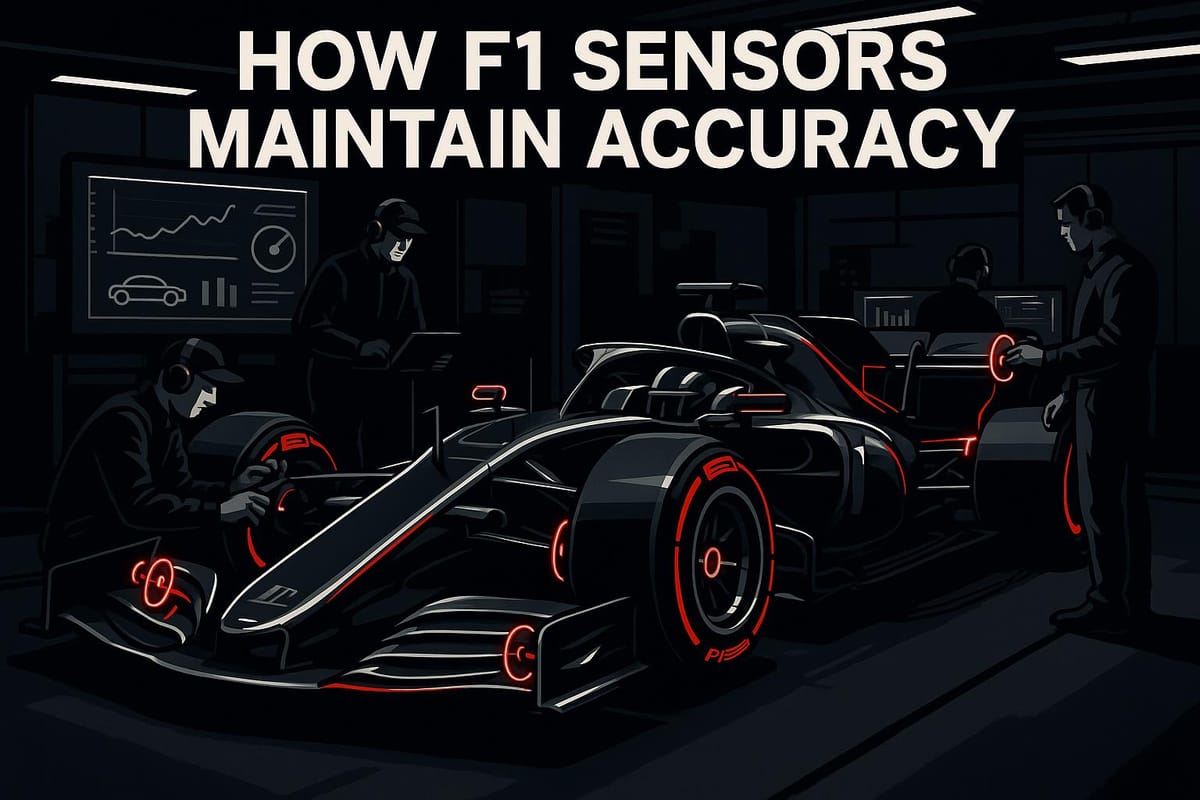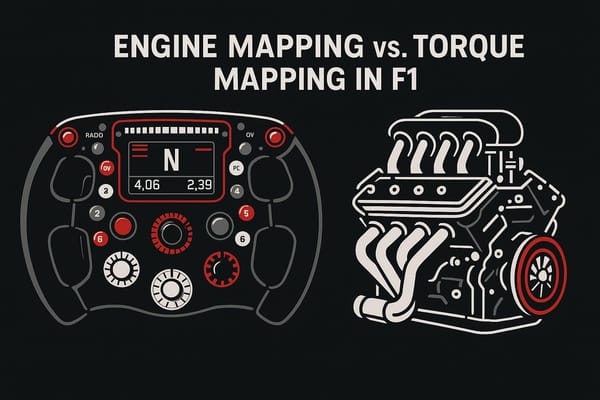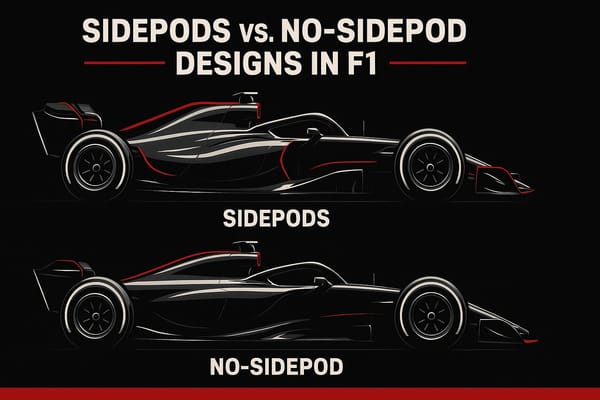How F1 Sensors Maintain Accuracy
Explore how advanced calibration and management of sensors enhance performance and safety in Formula 1 racing.

F1 sensors are the backbone of race performance and safety. They track critical metrics like engine RPM, brake temperature, tire grip, and aerodynamics in real-time, helping teams make split-second decisions. To ensure accuracy, F1 teams use advanced calibration methods like single-point and two-point calibration, along with specialized tools such as climate-controlled units and digital pressure calibrators. Managing sensor interference and filtering data ensures reliability, preventing failures and optimizing performance.
Key Takeaways:
- Sensors monitor engine, brakes, tires, and aerodynamics.
- Calibration methods ensure precision: single-point and two-point.
- Tools like torque calibration systems and vibration analyzers aid accuracy.
- Data filtering and interference reduction improve real-time decisions.
Accurate sensors are essential for race strategy, safety, and compliance with FIA standards.
2-46 Configuring & Calibrating Race Studio 3 Sensors - Live ...
Sensor Calibration Methods in F1
F1 teams rely on precise calibration methods to ensure their sensors provide accurate data. Here’s a breakdown of the two main approaches:
Single-Point Calibration
This method establishes a baseline by referencing a single value, often performed before each session. While effective for some scenarios, it may fall short for sensors exposed to a wide range of operating conditions.
Two-Point Calibration
This approach uses two reference values - one low and one high - to correct both offset and slope errors. It provides more reliable accuracy, particularly in situations where sensors encounter varying conditions.
F1-Specific Calibration Equipment
To ensure sensors perform accurately, F1 teams rely on advanced calibration tools designed to meet strict FIA standards. These tools are tailored to provide precise data by simulating and testing under controlled conditions. Key tools include:
- Climate-controlled units: These mimic various environmental conditions to fine-tune thermal sensors.
- High-precision digital pressure calibrators: These verify sensor accuracy across specific pressure ranges.
- Torque calibration systems: These ensure powertrain measurements are accurate.
- Acceleration reference units: These apply controlled forces to test accelerometers.
These tools work alongside previously mentioned calibration methods to maintain top-tier sensor reliability.
Knock Sensor Calibration Systems
Knock sensors play a vital role in identifying irregular combustion that could harm the engine. Calibrating these sensors involves specialized equipment such as vibration generators, digital signal analyzers, and temperature compensation modules. This ensures the sensors can reliably detect engine knock, safeguarding both engine health and performance.
Managing Multiple Sensor Systems
After precise calibration, managing how sensors interact is key to monitoring performance effectively. Modern F1 cars rely on a network of sensors working together to deliver optimal results. With so many systems in play, teams need specific approaches to ensure data remains accurate.
Reducing Sensor Interference
To cut down on interference, teams focus on smart sensor placement and fine-tuned signal management techniques. Engineers regularly test these setups during practice sessions to confirm performance and resolve any issues before race day. These efforts are supported by advanced filtering methods that clean up sensor data even further.
Data Processing and Filtering
Accurate, real-time data is the backbone of strategic decisions during a race. Teams use advanced algorithms to filter out noise and confirm the reliability of sensor readings. This multi-step process - starting with noise reduction and ending with data refinement - provides trustworthy insights. Together, reducing interference and refining data ensure sensors deliver the precision needed for split-second decisions.
Conclusion: Sensor Accuracy and Race Performance
As discussed earlier, precise sensor calibration is crucial for F1 teams aiming to stay competitive. During races, cars generate gigabytes of sensor data, which is essential for making split-second decisions that can determine the outcome of the race.
Accurate sensor readings are key to optimizing performance and ensuring both efficiency and safety. Even small calibration errors in critical systems like engines or brakes can lead to failures that put a car's race at risk.
Here are some key advantages of maintaining accurate sensor data:
- Real-time tire management: Adjustments can be made instantly to improve grip and durability.
- Fuel monitoring: Precise tracking ensures optimal usage and prevents running out during crucial moments.
- Adapting to track conditions: Sensors help teams respond immediately to changes in weather or surface conditions.
- Failure prevention: Early detection of potential issues reduces the risk of component failures.
With rigorous calibration, advanced data filtering, and built-in redundancies, teams can make the quick decisions needed to secure a win. Beyond the race, this data is invaluable for post-race analysis, helping teams refine their strategies and improve for future competitions.
FAQs
How do F1 teams maintain sensor accuracy during races, even in changing environmental conditions?
F1 teams use advanced calibration techniques and cutting-edge tools to ensure their sensors remain accurate throughout a race. Sensors are pre-calibrated under controlled conditions and regularly checked to account for factors like temperature changes, vibrations, and humidity.
To maintain precision during a race, real-time data monitoring systems are employed. These systems detect anomalies and allow teams to make on-the-fly adjustments, ensuring that sensor readings remain reliable despite the extreme and dynamic conditions of an F1 race.
What is the difference between single-point and two-point calibration methods, and when are they used in F1 sensors?
Single-point and two-point calibration methods are essential for ensuring sensor accuracy in Formula One. Single-point calibration adjusts the sensor to match a known reference value at one specific point, making it faster and simpler but less precise for varying conditions. This method is often used when only a narrow range of accuracy is required.
Two-point calibration, on the other hand, involves calibrating the sensor at two distinct reference points, allowing for greater accuracy across a broader range of measurements. This method is particularly useful in F1, where sensors must perform reliably under rapidly changing conditions, such as varying speeds and temperatures during a race.
How do F1 teams ensure sensors remain accurate and reliable during races?
F1 teams rely on advanced calibration techniques and specialized tools to maintain sensor accuracy during races. Sensors are meticulously tested and calibrated before each event to ensure they deliver precise data under extreme conditions like high speeds, intense vibrations, and fluctuating temperatures.
To minimize interference, teams use shielding materials and optimized sensor placements to protect against electromagnetic interference (EMI) from other components. Continuous monitoring during the race also helps teams identify and address any anomalies in real time, ensuring data reliability for critical decision-making on the track.




